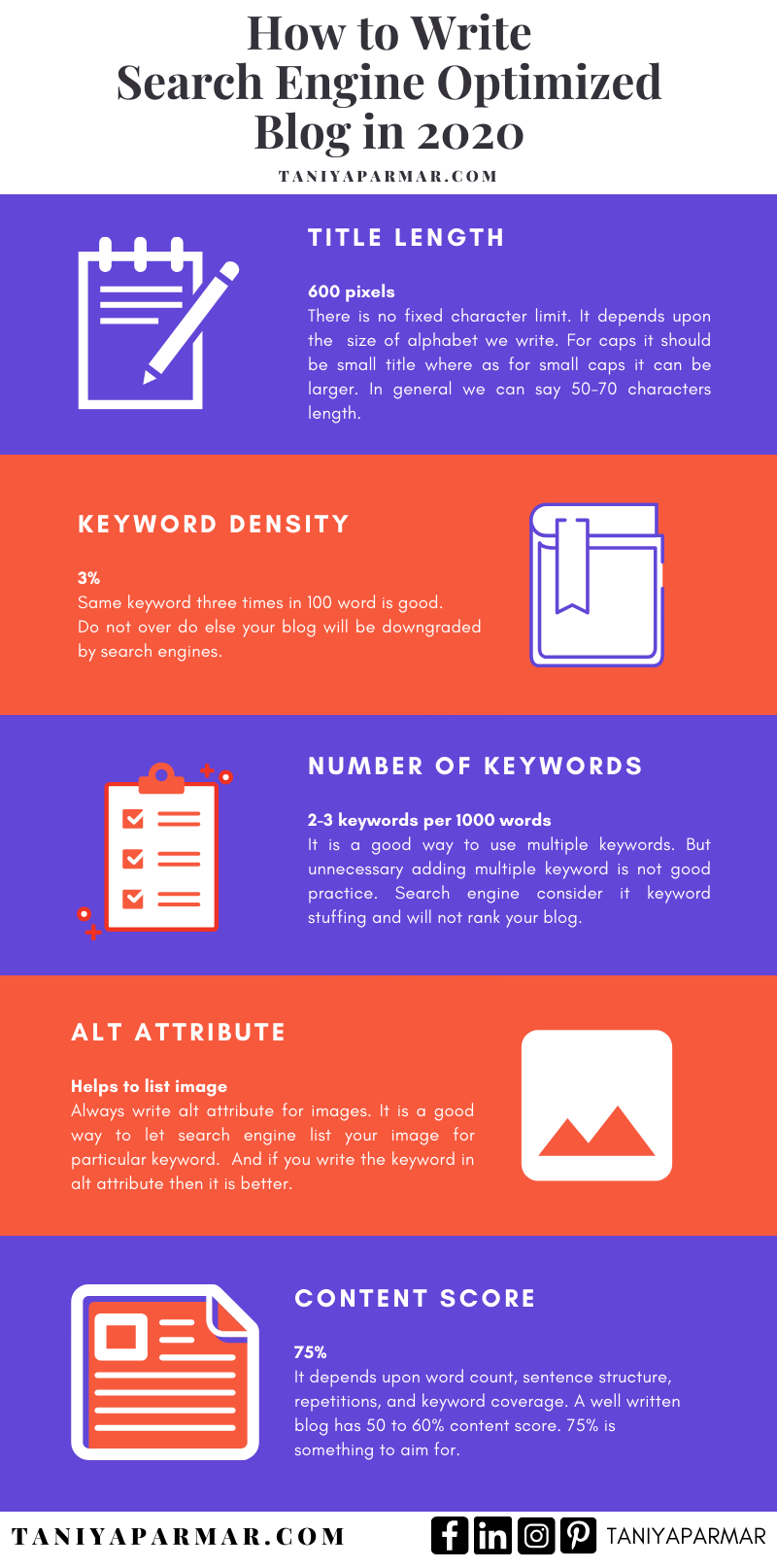You have properly written blog posts. But are you struggling to rank them in search engines? Then do not worry, you are not alone. A lot of people suffer from this problem. There is a very simple way to solve this problem. I make websites and do digital marketing for my clients. Some of them prefer to write their own articles but stuck with a lack of basic rules of How to Write Search Engine Optimized Blog. Every time I have to tell them so that they can write in a proper way. And it has made wonders in their business growth. This gives me an idea to share the same with you. So that you can rank your blogs too and get something in return after putting all your efforts. So here is a quick guide of How to Write Search Engine Optimized Blog in 2020. I hope you can be benefitted too.

How to Write Search Engine Optimized Blog Quick Guide
Outline: [Blog Post Title]
Keyword: [Enter Targeted Keyword]
Keyword MSV: [Enter Targeted Keyword’s Monthly Search Volume]
Buyer /Reader Persona: [Enter Targeted Reader and/or Buyer Persona]
Rule 1: Blog Post Title
Make sure the title has 60 characters or less.
Rule 2: Introduction
Lead into the post with a short 100-200 word introduction. Be sure to highlight:
- The reason why what you’re talking about is important.
- Who, what industry, or what sector of the industry or what type of people this applies to.
- What you’ll be covering [i.e. “in this post, we’ll explain why (term, why (term) is important, explain how (term), and provide our answer/solution or product”].
Rule 3: What is [Term], and Why Does it Matter?
Some readers may have no idea what it is you’re explaining how to do. Obviously, if what you’re writing about is well-known, you can skip the definition. After defining the term, explain why it’s important for the reader to understand the idea and/or know how to do what you’re writing about.
Rule 4: How to [Task]
This section should make up the bulk of the writing in your blog post. It’s enormously important for each step to have its own section header for optimal organization, clarity for the reader, and search engine optimization. Additionally, breaking instructions up by sections also lets you include visual aids for each step as needed in the form of a GIF, image, or video. It’s important to remember to be clear, concise, and accurate in the steps you provide your readers. Any extra “fluff” to the article may confuse them, resulting in some readers not achieving the results they intended. If what you’re explaining how to do is solve an equation (i.e. “How to bake a cake”), provide a step-by-step explanation and example of what are indigents, where to buy, how to bake, etc. Show all of your work so the reader can follow along easily.
Rule 5: Tips and Reminders for [Term] (Optional)
If you’re breaking down a difficult concept or task, some readers may still feel overwhelmed and unsure of their ability to tackle it. Break down a few suggestions on how to best approach the concept, and/or a few reminders about it. This is not a list post, so keep this shortlist to three to five pieces of advice. If you feel the step-by-step approach is sufficient, you can choose not to include this section.
Rule 6: Closing
Wrap up your amazing new blog post with a great closing. Remind your readers of the key takeaway you want them to walk away with and consider pointing them to other resources you have on your website.
Rule 7: Call-to-Action
Last but not least, place a call-to-action at the bottom of your blog post. This should be to a lead-generating piece of content or to a sales-focused landing page for a demo or consultation.
Rule 8: Checklist Before Publishing
- Did you provide clear, actionable steps to accomplishing the task your reader needed help with?
- Did you provide relevant and accurate facts and stats to prove your understanding of the concept?
- Did you emphasize the importance of understanding this concept if it is not already well-known?
- Did you properly cite and backlink your sources?
- Did you spell check and proofread?
- Are there at least 4 to 6 images?
- Is the post 800-1,000 words at a minimum?
I hope, now you know How to Write Search Engine Optimized Blog and you are going to apply on your blog posts. And if you want to apply technical SEO or On-Page SEO then do not forget to read SEO Guide for Article Writing
Please let me know in the below comment section if you want to know more about SEO or you want to share your success story after applying these rules of How to Write Search Engine Optimized Blog. Also, stay connected for more resources as well as more SEO tips. And if you are looking for an article writer or SEO Expert then I am just a click away 🙂
